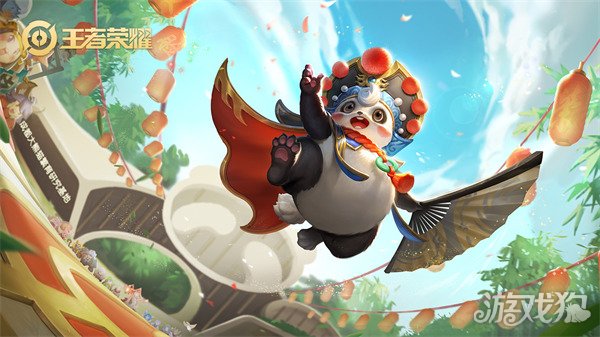用英语写家谱

There six people in my familyThey are my grangparents,myparents my sister and me
我家有六个人,他们是爷爷、奶奶、爸爸、妈妈、姐姐和我
一 词汇
⑴ 单词
1 介词:in, on, under, behind, near, at, of
1) in表示"在……中", "在……内"。例如:
in our class 在我们班上
in my bag 在我的书包里
in the desk 在桌子里
in the classroom 在教室里
2) on 表示"在……上"。例如:
on the wall 在墙上
on the desk 在桌子上
on the blackboard 在黑板上
3) under表示"在……下"。例如:
under the tree 在树下
under the chair 在椅子下
under the bed 在床下
4) behind表示"在……后面"。例如:
behind the door 在门后
behind the tree 在树后
5) near表示"在……附近"。例如:
near the teacher's desk 在讲桌附近
near the bed 在床附近
6) at表示"在……处"。例如:
at school 在学校
at home 在家
at the door 在门口
7) of 表示"……的"。例如:
a picture of our classroom 我们教室的一幅画
a map of China 一张中国地图
2 冠词 a / an / the:
冠词一般位于所限定的名词前,用来署名名词所指的人或事物。冠词有不定冠词和定冠词两种。不定冠词有两个形式,即a和an。a用在以辅音音素开头的词前,如a book; an用在以元音音素开头的字母前,如an apple
a或an与可数名词单数连用,泛指某类人或某物中的一个。
This is a cat
这是一只猫。
It's an English book
这是一本英语书。
His father is a worker
他的爸爸是个工人。
the既可以用在可数名词前,也可以用在不可数名词前,表示某个或某些特定的人或事物,也可以指上文提到过的人或事物。
Who's the boy in the hat
戴帽子的男孩是谁呀?
------ What can you see in the classroom
------ I can see a bag
------ Where's the bag
------ It's on the desk
------- 你能在教室里看到什么呀?
------ 我能看见一个书包。
------ 书包在哪呀?
------ 在桌子上。
3some和any
①在肯定句中用some例如:
There are some books on the desk桌子上有一些书。
Lucy has some good books露西有一些好书。
②在疑问句和否定句中用any。例如:
Is there any ink in your pen你的钢笔里有墨水吗?
Do you have any brothers and sisters你有兄弟姐妹吗?
There isn't any water in the glass杯子里没有水。
⑵记住它们的特殊用法。
①some亦可用于表示盼望得到对方肯定的答复或表示建议、委婉请求的疑问句中,这一点我们不久就会学到。例如:
Would you like to have some apples你想吃苹果吗?
②any也可用于肯定句中,表示"任何的"。例如:
Any one of us can do this我们当中任何一个都能做这个。
some 和any的用法是经常出现的考点,希望大家能准确地掌握它们的用法。
4family
family看作为一个整体时,意思是"家庭",后面的谓语动词be用单数形式 is ;如把family看作为家庭成员时,应理解为复数,后面的谓语动词be应用are。
My family is a big family 我的家庭是个大家庭。
My family are all at home now 我的家人现在都在家。
Family强调由家人组成的一个集体或强调这个集体中的成员。home指个人出生、被抚养长大的环境和居住地点。 house指"家"、"房屋",侧重居住的建筑本身。
His family are all workers 他的家人都是工人。
My home is in Beijing 我的家在北京。
He isn't at home now 他现在不在家。
It's a picture of my family 这是一张我全家的照片。
5 little的用法
a little dog 一只小狗,a little boy 一个小男孩。little常用来修饰有生命的名词。
但little还可表示否定意义,意为"少的",加不可数名词。
There is little time 几乎没时间了。
There is little water in the cup 杯中水很少。
⑵ 词组
on the desk 在桌子上
behind the chair 在椅子后
under the chair 在椅子下面
in her pencil-box 在她的铅笔盒中
near the door 在门附近
a picture of a classroom 一个教室的
look at the picture 看这张
the teacher's desk 讲桌
a map of China 一张中国地图
family tree 家谱
have a seat 坐下,就坐
this way 这边走
二 日常用语
1 Come and meet my family
2 Go and see I think it's Li Lei
3 Glad to meet you
4 What can you see in the picture
I can see a clock / some books
5 Can you see an orange
Yes, I can / No, I can't
6 Where's Shenzhen
It's near Hong Kong
7 Let me see(口语)让我想想看。
see 在这是"明白、懂了",不可译作"看见"。例如:
8 Please have a seat
seat表示"座位",是个名词。have a seat表示"就坐",也可以说take a seat, 和sit down的意思相同。
三 语法
1 名词所有格
名词如要表示与后面名词的所有关系,通常用名词所有格的形式,意为"……的"。一般有以下几种形式:
(1) 一般情况下在词尾加"'s"。例如:
Kate's father Kate的爸爸
my mother's friend 我妈妈的朋友
(2) 如果复数名词以s结尾,只加"'"。例如:
Teachers' Day 教师节
The boys' game 男孩们的游戏
(3) 如果复数名词不以s结尾,仍加"'s"。例如:
Children's Day 儿童节
Women's Day 妇女节
(4) 表示两个或几个共有时,所有格应加在后一个名词上。例如:
Lucy and Lily's room Lucy 和Lily的房间
Kate and Jim's father Kate 和Jim的爸爸
动物和无生命事物的名词的所有格一般不在词尾加"'s",而常常用介词of的短语来表示。
a map of China 一幅中国地图
the name of her cat 她的猫的名字
a picture of my family 我的家庭的一张照片
the door of the bedroom 卧室的门
2 祈使句
祈使句主要用来表示说话人的请求、命令、建议、叮嘱等意图。祈使句一般不用主语,读时用降调。为使语气委婉、礼貌,常在句首或句尾加please 。在句尾时,please前多用逗号。
(1) 祈使句肯定形式的谓语动词一律用动词原形。
Go and see 去看看。
Come in, please 请进。
(2) 祈使句的否定形式常用don't于句首。
Don't look at your books 不要看书。
Don't play on the road 不要在马路上玩。
3 There be 的句子结构
There be是一个"存在"句型,表示"有"的意思,
肯定句的形式为:There be + 名词(单数或复数)+地点状语或时间状语。
be动词单复数的确定,看be后边第一个名词,当所接主语为单数或不可数名词时,be动词形式为is;当所接主语为复数名词时,be动词为are;当be动词后接两个以上主语时,be动词与最临近主语保持数上的一致。意思为"某地有某人或某物"。如:
There is an eraser and two pens on the desk 桌子上有一块橡皮和两支钢笔。
There are two pens and an eraser on the desk 桌上有两支钢笔和一块橡皮。
(1)there be的否定句,即在be的后面加上not。
否定形式为:There be + not + (any) + 名词+地点状语。
There is not any cat in the room 房间里没猫。
There aren't any books on the desk 桌子上没书。
(2)there be句型的疑问句就是将be提到句首:Be there + (any) +名词+地点状语?肯定回答:Yes, there is / are 否定回答:No, there isn't / aren't
---Is there a dog in the picture 画上有一只狗吗?
---Yes, there is 有。
---Are there any boats in the river 河里有船吗?
---No, there aren't 没有。
(3)特殊疑问句:How many are there (+地点状语)?"某地有多少人或物?"回答用There be
There's one / There are two / three / some
有时直接就用数字来回答。One / Two
---How many students are there in the classroom 教室里有多少学生?
---There's only one / There are nine 只有一个。/有九个。
(4)如果名词是不可数名词,用:How much + 不可数名词 + is there + 地点状语?
How much water is there in the cup 杯中有多少水?
How much food is there in the bowl 碗里有多少食物?
248回答者: rabinkong - 二级 2007-12-2 13:50
我来评论>>
提问者对于答案的评价:不是很全,但也不错了~~~~~~~
相关内容
七年级上册英语语法(人教版) 20 2008-1-22
人教版七年级英语语法归纳 100 2008-1-19
初中英语语法整理 关于be+adj+prep 中考急需,一定要正确~~ 11 2009-7-10
英语语法整理 1 2008-5-30
初中英语语法内容整理 20 2007-6-9
查看同主题问题: 人教版 七年级 英语语法 整理
其他回答 共 1 条
其实初一的英语不是太重要的,就像我啊,初一没学好,初二,初三努力学,认真听课,照样考的很好的~
1把单词记好,会问好,问别人名字,每单元的大标题会理解。
2多思考,多读多背。
3take sb sth=take sth to sb
play sports=do sports
a lot of=lofs of
want+名词 想要某物
当主语是人want to do sth想做某事
当主语是物want doing 意思同上
12个月及说出生年月的顺序
go不能直接跟宾语(除了副词外,如:go home,go here,go there)
play直接加体育运动,不能直接加乐器,要加上a或the,如:play a guitar
介词后跟名词代词动名词
at+时间,如:at 7:00
主语+谓语+宾语(my name is lin)
My family
I have a happy family In my family there is my father, my mother and I My father is a kind man that he always kind to others He works in an office My mother always stay at home and does housework She cooks food for us It's very delicious!
On weekends we sometimes go picnic We always have a good time Sometimes we also go shopping together We buy something we need then we have supper in the restaurant。
我的家人
我有一个幸福的家庭。我家有我爸爸,我妈妈和我。我的父亲是一个善良的人,他总是对人很友好。他在办公室工作。我妈妈总是在家里做家务。她为我们做饭。味道非常好。
周末我们有时去野餐。我们总是有一个好的时间。有时我们也一起去购物。我们买一些我们需要我们的餐厅吃晚餐。
用英语写家谱
本文2023-11-10 07:05:29发表“资讯”栏目。
本文链接:https://www.lezaizhuan.com/article/449129.html











